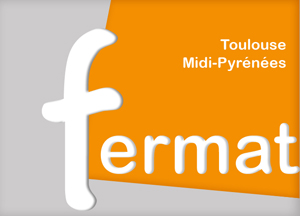Turbulent boundary layer on natural bottoms
The modeling of turbulent boundary layers over complex bottoms in the context of river flows is still far from being finalized. Indeed, contrary to atmospheric or oceanic cases, river flows often present low levels of immersion of the roughnesses forming the bottom. The classical formulations in hydraulic roughness and logarithmic profiles struggle to describe the flow correctly. Moreover, the modeling of hydro-ecosystems requires to take into account the flow in the canopy, defined here as the zone of the flow located under the top of the roughness (noted h).
For very low immersion flows, several PhD studies have demonstrated the persistence of a log law in very confined flows (D/h=1.5 to 3 with D the water depth and h the height of roughness) and highlighted the loss of the universal character of the turbulent intensity profiles for D/h<2 (Rouzès et al., Journal of Hydraulic Research, 2019). The PhD thesis of Loïc Chagot (2015-02/2019, ANR Flowres funding), funded by the ANR Flowres (2015-2018) completed this analysis with a study of the evolution of the flow in the canopy for relative immersion levels between D/h=1.3 and D/h=3.1.
In parallel, a semi-analytical model was developed by Cassan et al. (Water, 2017) to predict the overall friction of an emergent or shallowly immersed rough bottom in a mountain river context. A similar approach was chosen by Loïc Chagot in his PhD thesis, which highlights for the friction laws a weakly immersed regime between D/h=1 and D/(Φh)=4 where Φ is the average canopy porosity. For emergent roughness (D/h<1), drag models with a CD coefficient are very effective. For highly immersed roughness (D/(Φh)>4), the log law and the deficit law dominate the flow, and good predictability with classical Manning-Strickler type approaches is found. In the low immersion zone, the friction depends on both the geometry and the submergence level.
Beyond the difficulty of correctly describing uniform flow regimes, the implementation of the vertical complexity of weakly submerged or emergent flows in gradually varying flows is a major issue. The study by Thual et al. (Journal of Fluid Mechanics, 2015) is a first step towards developing numerical tools for solving vertically integrated equations in a non-uniform vertical velocity profile context.






